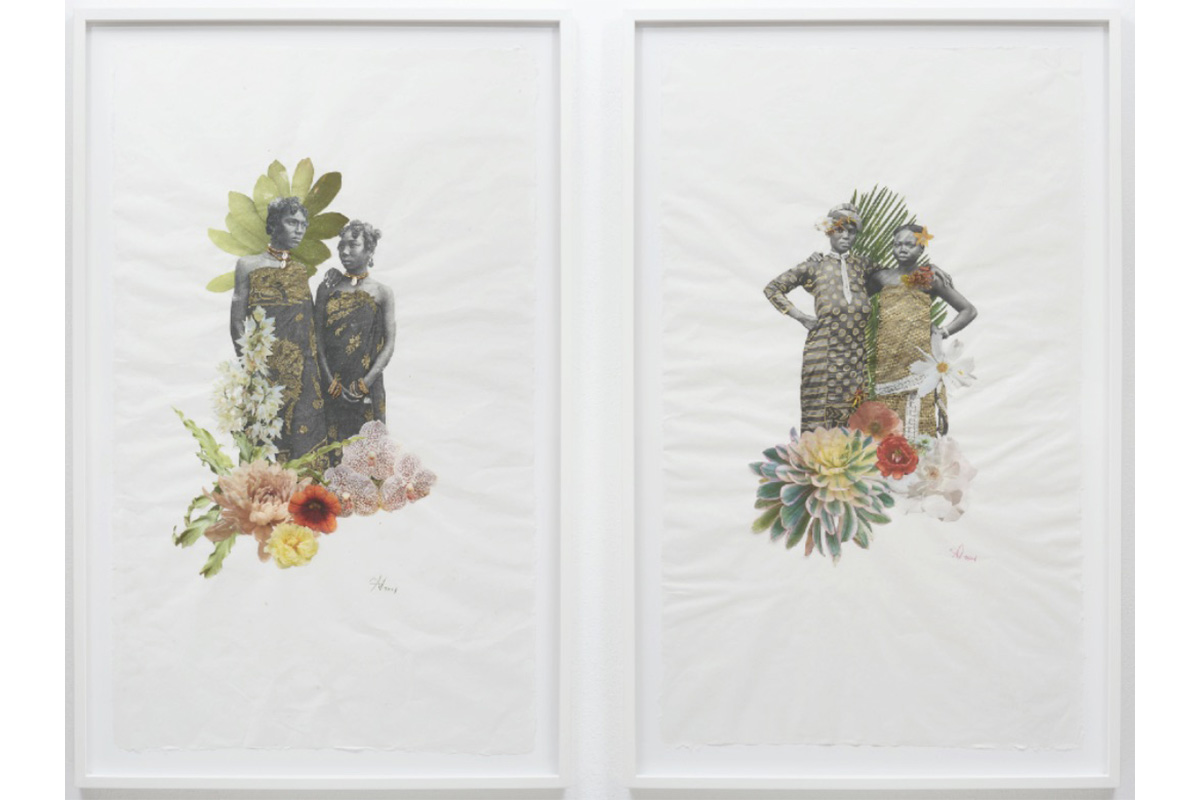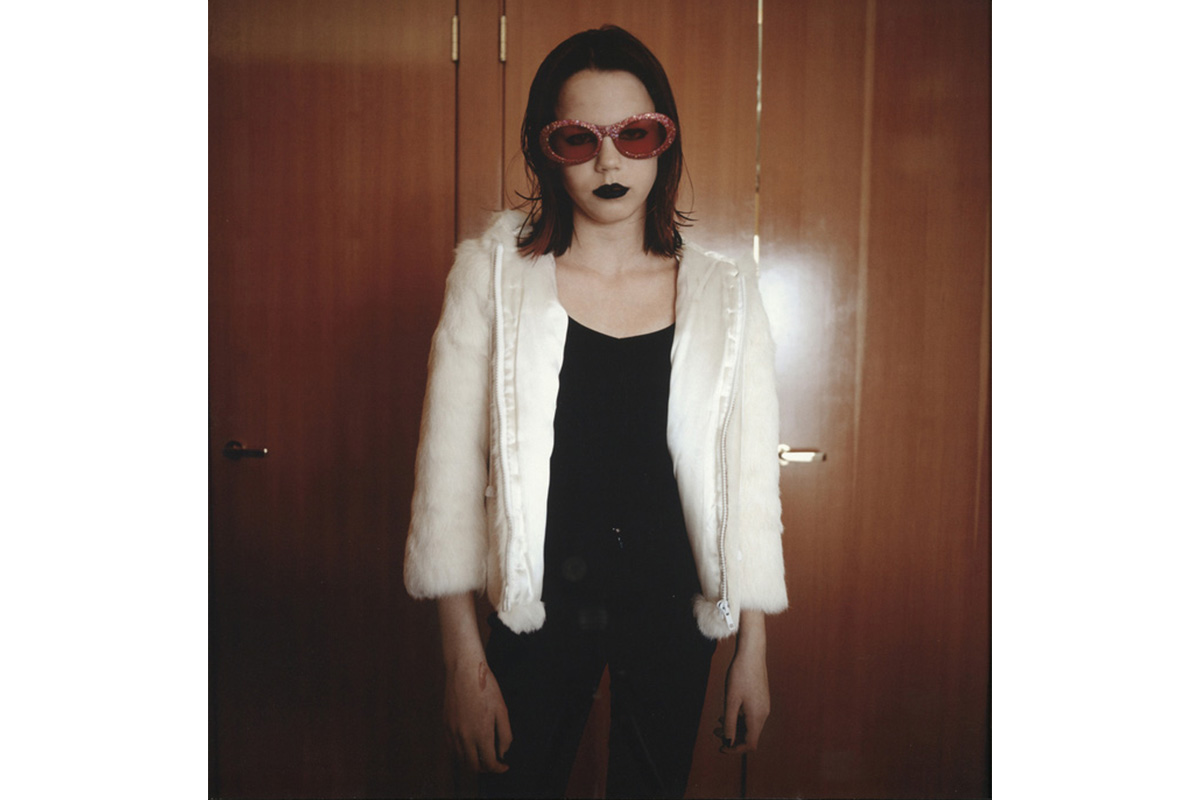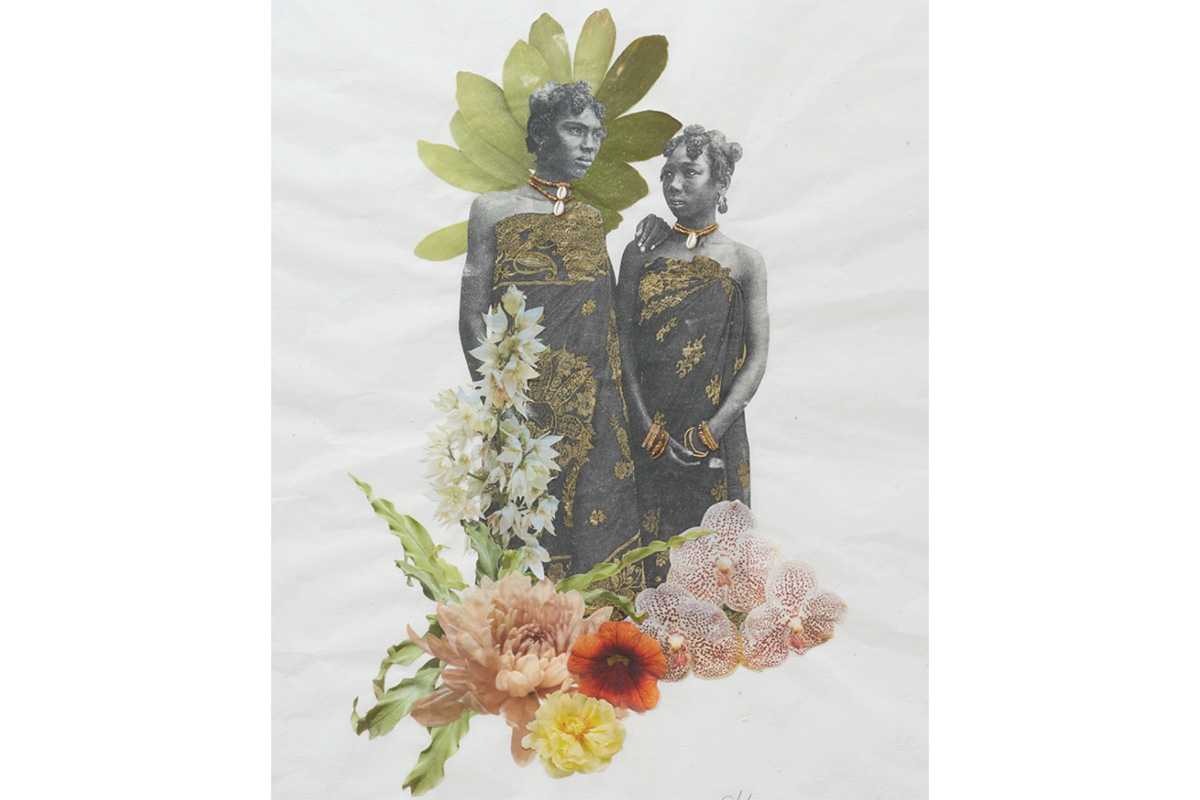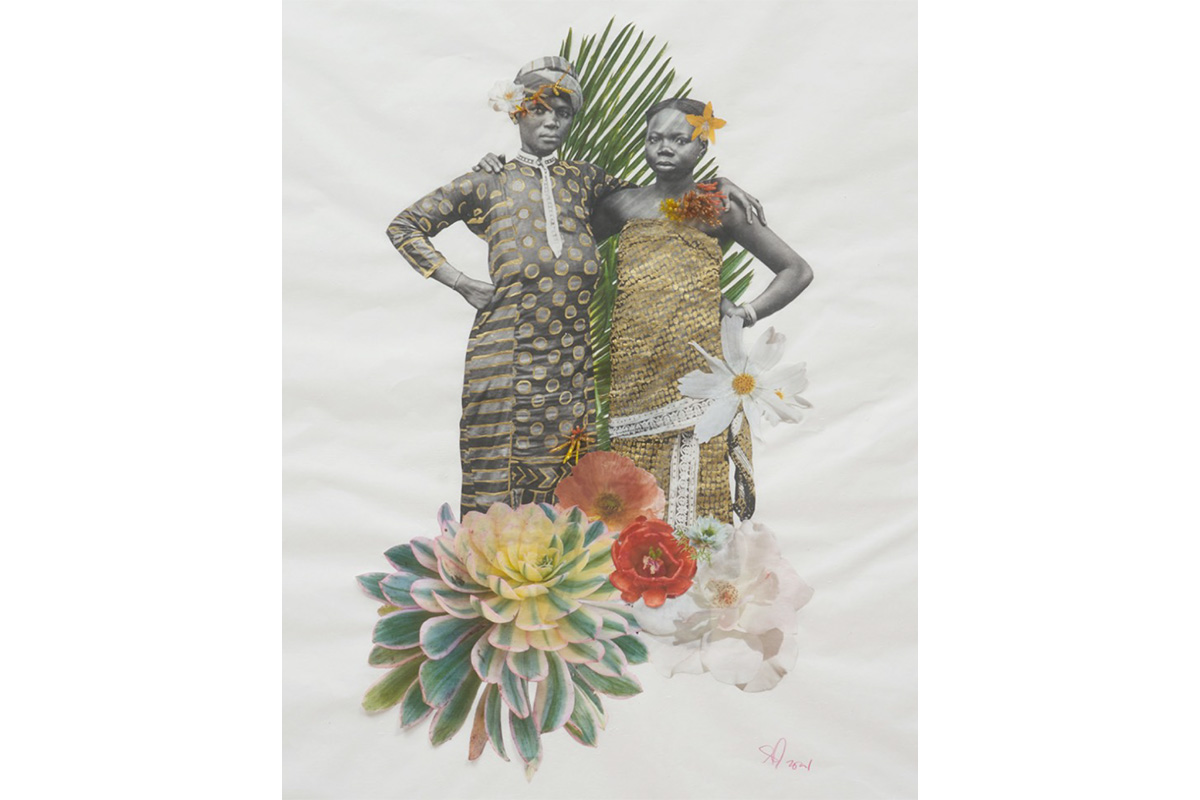
2021, Collage, gold ink, shells, and beads on handmade paper. Purchased with the Dorothy C. Miller, class of 1925, Fund, SC 2022.11
Andrea Chung Joins the SCMA Collection
Mosa Molapo ‘22 graduated from Smith in May with a double major in Art History and African Studies. Mosa also served as the 2021-2022 Kennedy Museum Research Fellow in Art History at SCMA.
Over the course of the academic year, I worked with the Baio collection, a group of 100 photographs donated by Joe Baio and Anne Griffin (class of 1983). One of my objectives was to acquire a new piece for the museum that engages both with this donation and the greater SCMA collection.
The process began with outlining some commonalities and themes within the Baio collection. Because I researched and documented a number of the photographs, I already felt quite familiar with the works. Along with my supervisor, Aprile Gallant, we identified how most of the photographs focused on documenting childhood, and specifically the tensions, anxieties, and joy associated with girlhood. Some artists like Laura London or Lauren Greenfield wrestle with the growing pains of being a teenage girl, and give representation to this experience of youth which is often dismissed or labelled as trivial. Other artists, such as Muzi Quawson or Bharat Sikka, capture younger children who are still in the midst of forming their identities, but do so in similar playful ways. This theme is interpreted in a multitude of ways, and so I decided to move from this centering of girlhood as I began the search for a new acquisition.

I noticed how the perspectives represented in the Baio gift are primarily European and American. As a result, I thought increasingly about how to widen this geographichic representation. As an African studies and Art History double major, my focus is on African and Black diasporic art that questions and examines black history, identity, joy, violence, tensions etc. in visual culture. Consequently, when asking the question about what works I would be excited to see in the SCMA collection, the immediate answer was a work that revolved around blackness. From here, I was led to Andrea Chung’s 2021 exhibition We Was Girls Together.
Andrea Chung is a multimedia artist who was born in 1978 in Newark, New Jersey. Through a variety of different mediums, Chung’s research-based practice focuses primarily on island nations in the Indian Ocean and the Caribbean sea. In her work, she explores her own intersecting Caribbean identities, and investigates labour materials in their relationship to post-colonial countries, the body, and migration involving perishable and precious materials with strong underlying histories.

This acquisition comes from Chung’s recent exhibition We Was Girls Together at Tyler-Park Presents Gallery, and is inspired by Toni Morrison’s book Sula. The body of work is a series of large-scale collages that celebrate and pay gratitude to the nuanced relationships of black women in all their complexities. The exhibition is deeply layered with spiritual and physical elements that demand the viewer to take a prolonged look and intimately experience the work. Each piece in We Was Girls Together depicts ethnographic photographs (pulled from historical archives) of women in their familial relationships, friendships, and partnerships, collaged within a plethora of flora, shells, rhinestones, beads, and pins. This work titled Sula Never Completed; She Simply Helped Others Define Themselves II, is a diptych that showcases two pairs of women collaged with flowers, beads, and plants.
In this series of works and ones preceding it, Chung makes reference to spiritual figures and through the various beads, shells, and colours she selects in her collages. These elements are associated with divine entities known as Orishas that provide further protection to the people in the piece and the piece itself. The paper she collages on is made from handkerchiefs, referencing the tradition of midwives in the American South and Caribbean who use handkerchiefs in the birthing process. With all of these elements, we see how Chung connects black womanhood and experiences across oceans, continents, and various landscapes.

I was fortunate enough to interview Chung, and I asked her how she conceptualised this exhibition and what led her in the art-making process. She described the exhibition as a “love letter to the Black women who have been supportive, or who have inspired, or challenged the norm and been successful.” Chung is deeply reflective of how to speak through her art and connect generations of black women from artistic, philosophical, and literary background into this arena of visual culture.
I am drawn to collage as a medium because I think it demands prolonged viewing and consideration because of the playful experimentation with imagery and material. The SCMA collection has a range of contemporary artists and works; for example, Kenyan artist Wangechi Mutu’s 2013 print Second Born demonstrates the detailed layering and manipulation of textures, which makes it so compelling. Chung’s diptych, Sula Never Completed; She Simply Helped Others Define Themselves II complements both the SCMA collage collection and touches on similar themes of the Baio collection including girlhood, femininity, and identity. Academic departments that could potentially use this piece in their classes include: Africana Studies, Art, Anthropology, History, and African Studies.
Over this past year, I was fortunate enough to learn about artists like Andrea Chung who make intimate and connective visual art that expands questions and explorations about Blackness. In addition, my work as a fellow gave me insight into the rigorous acquisition process that institutions participate in, and the collective effort and division making that goes into bringing a new piece into the collection. I think that Chung’s diptych is so compelling and creates a helpful and interesting starting point for discussion, inquiry, and appreciation.